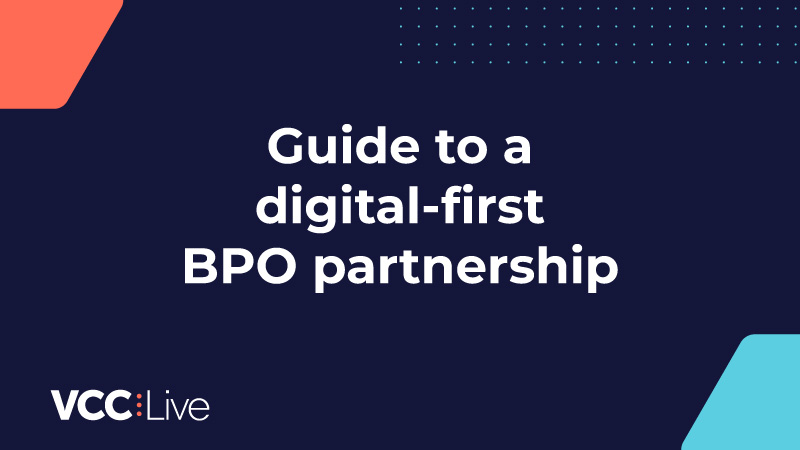In today’s ever-changing world people can choose from many means of communication, depending on what is most convenient for them at the time. In the world of call centers, while telephone conversations, emails, and instant chat messages all meet the purpose of connecting a customer with a call center operator in order to receive professional support, different situations may require different types of communication. This is where multichannel communication comes into play.
Some people prefer the immediacy of a phone call conversation, others prefer the comfort of emails. There is no single channel that can meet the expectations of all your customers, but what can you do to keep in touch with your clients efficiently, but still stay focused and not open too many channels that only scatter your operational processes?
Should you expand your communication channels and add a chat service to your phone and email support lines? Or maybe try to deal with more of those incoming email enquiries via phone conversations instead?
As there is no perfect solution to these questions, we offer here an overview of some of the benefits and disadvantages multichannel communication and these communication channels possibilities bring, hoping this will in turn help you make the best choice for your call center. Read our article, and discover whether email, chat or phone is the best communication channel for your call center.
Email
Is email a communication channel of the past? Definitely not, as we already discussed it here. Without doubt, email is an essential mean of multichannel communication. The appeal of email is well known to both call centers and customers, and has been appreciated by both sides for years.
For customers, writing an email when they have time to properly focus on it, and reading the answer once they decide to do so themselves, gives them control over the tempo of the communication. However, it also increases the risk of miscommunication, and on the call center operators side the potential for misunderstanding the customer’s issue and/or questions. Here are some further advantages and disadvantages of email communication:
+ No immediate response required: for either the customer or the operator handling the incoming email queue. As there is usually an accepted SLA rule at each call center, this allows operators to take their time when answering, and customers to take their time when acknowledging a reply.
+ Keeping a copy of the communication: while call centers can record and keep copies of phone conversations, customers rarely have this opportunity and are breaching the law if they make unauthorised recordings. Emails, however, give both parties a written trace of the communication, which is particularly useful if there are disputes later on.
+ Convenience and time: while getting in touch with an operator and having a conversation over the phone is only possible during a call center’s opening times, email is not restricted by working hours. This can be especially useful if you have to take into account time differences between states and countries.
– Long queues and expectations: while it is true that operators do not necessarily have to answer emails immediately, this can lead to an accumulation of long email queues, which slow down operators work. And the longer a customer waits for an answer, the more thorough and exhaustive they expect the answer to be, in which case receiving a pre-created template or short, unclear message from the operator will not be happily received.
– No potential for clarifying questions: often an operator needs to ask clarifying questions in order to fully understand a customer’s issue, which is much harder when communicating via email. This may mean several messages are exchanged back and forth before the issue becomes clear, leading to an unsatisfied customer and a decrease in the operator’s First Contact Resolution KPI.
– Lack of empathy and emotion: we have all experience of how the written word cannot always clearly convey our emotions. This is why it is easy to misinterpret or overlook the frustration of a customer. If operators are not able to read a customer’s emotions between the lines, they can easily provide a reply that further damages the customer’s already fragile mood.
Chat
Chat is fast becoming the ’next big thing’ in multichannel communication, with instant messaging windows popping up on more and more company websites. It’s gaining wider popularity and as such more attention in the call center industry, especially since the younger generation and millennials seem to prefer texting so much more than actual conversations over the phone. Also, as we already talked about it in a previous blog post, when used properly, it can even help you boost your sales. So why is chat so popular?
+ Smaller queues, less waiting: instant messaging is not called instant for nothing, because, as opposed to email, it allows customers to get in touch with call center operators instantaneously and easily. Furthermore, in comparison to emails, chat allows operators to ask clarifying questions which help them understand the problem better and provide the needed support, thus helping to achieve a better First Contact Resolution KPI, and better customer satisfaction.
+ Proactivity and sales support: while calls and emails are usually reactive (meaning that operators respond to communication initiated by customers), chat can be used as a proactive means of communication. Customers browsing through a webpage can be contacted directly and offered both help in finding what they need, and information about other products or services and sales and promotional packages, thus helping to boost sales results.
+ Multitasking: chat allows operators to browse and look for supporting information while chatting with a customer, without the need to mute the line and leave the customer listening to hold music or an awkward silence. Furthermore, while an operator can only handle one phone call at a time, chat allows operators to handle up to an average of three chats at the same time, making it a very cost efficient solution.
– Written communication lacks emotion: just as with emails and written communication in general, one of the drawbacks with chat is the inability to clearly read people’s emotions. Unfortunately, even though chat is a more convenient way to communicate using writing, the danger of misreading a customer’s emotions is still applicable.
– Speed of writing: while it is true that instant messages are faster than emails, typing is still not as fast as a spoken conversation would be. While the customer receives a reply within moments, some people type slower than they speak, meaning that delays in replying are still possible, especially if chat traffic is heavy.
– The traps of scripting: a large number of customers reacts badly to scripted replies and message templates. While well-developed FAQ pages offer help for operators to find the right answer and information quickly, it can also be a trap. If agents start copying and pasting replies to customer questions without fully understanding the customer’s needs and updating the template answer to make it more personal, this can have a negative result on customer satisfaction.
Phone
As the foundation of call and call centers, telephones are probably still the most preferred and used way to contact customer care centers. They allow immediate contact and two-way communication, which is invaluable when trying to solve an issue effectively (read our pro tips on how to handle incoming calls in a professional way). However, a long time spent waiting in line for someone to take a customer’s call, complicated IVRs, or being put on hold one too many times can easily lead to customer frustration rather than the feeling of achievement.
+ Feelings and empathy: as mentioned above, it is hard to convey or read emotions in written communication. This is where phone support provides the greatest help for operators in both reading and handling customer’s emotions. Hearing the tone of voice, attitude and urgency in a customer’s voice can help an operator adjust to the customer’s emotional state and communication style.
+ Average Handling Time: people speak faster than they write. While it is true operators can handle more than one chat session at the same time, phone conversations can be handled quickly and easily, with the right scripts and FAQ platforms providing help. This allows agents to achieve very good results in their Average Talking Time KPI per call. Furthermore, phone calls are still the fastest way for customers to ask a question and receive the support they need.
+ One call, one immediate resolution: having a phone conversation provides the best possibility to discuss an issue thoroughly and to immediately provide/receive the needed support. It not only make it possible to ask clarifying questions, it also allows customers to follow step-by-step instructions from operators and give immediate feedback about the effectiveness of a solution, which means this is still the best way to achieve high First Contact Resolution KPI results.
– The Age of Millennials: while the phone is still one of the most preferred communication channels at the moment, this will most probably change in the near future. With young people today having constant access to mobile devices, and millennials seemingly preferring to type and text rather than call, phone calls’ popularity is quickly dropping among the younger generation.
– “Please hold the line”: a phrase that puts off a lot of people when speaking with a call center operator. While agents can look up information quickly in written text and then copy paste it in a chat window without asking for a customer to be patient, during a phone call the operator always needs to ask for the customer to wait until they find the needed information.
– Unreliable phone lines: even with today’s advanced technology, it is not unusual to experience problems in the telephone line or voice quality, not to mention the intrusion of background noise that can be experienced at either the customer’s or operator’s end.
These days, multichannel communication offers a number of possibilities, so no matter which communication channel you use, you will always be able to achieve the main task it is meant to serve – to connect a customer with a call center operator. But one size does not fit all when it comes to call center solutions. Picking the right type of communication channel is of the utmost importance for your call center, and requires careful thought.
In some cases, a call center can work perfectly by following the “less is more” principle and using only one or two channels. In other cases, however, the principle of “the more, the merrier” will be more appropriate, meaning multichannel communication leading to happier customers. The decision of what’s right for you is still yours, but the good news is: whatever choice you make, the call center industry is ready for it.



















